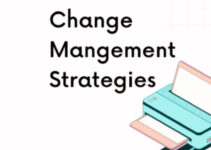Change outlines the method of altering the status quo and launching transformational changes in the company. They comprise introducing new technology, and new products, improving processes, and reorganizing teams. However, diversity outlines a variety of different employees and people comprising differences in cultural background, religion, race, age, sexual orientation, gender, and ethnicity. Today, we’ll discuss the Management of Change and Diversity in the Organization; change traits, types of diversity, the connection between change and diversity, and steps involved in the process.
Diversity and change are the key elements of thriving and successful businesses and companies. They could develop an innovation and dynamic working environment by exploiting diverse employees and strengths; they do so by promoting change and adopting diversity in the organization.
Traits of Change in the Organization
- Necessary: change is essential for companies to gain a competitive edge in an evolving working environment.
- Continuous: change is a continuous process and they need to regularly adopt the changes relevant to the changing environment.
- Opportunistic: change offers a lot of opportunities for the companies to achieve better results and increase productivity.
- Challenging: change is difficult for companies and employees and it causes resistance, uncertainty, and stress
- Unpredictable: helps companies to be ready and have a contingency plan for unpredictable changes.
- Inevitable: change is a constant and inevitable part of the business environment.
- Dynamic: change makes businesses dynamic and quickly responds to the changing market needs
Types of Diversity in the Workplace
Some of the main types of diversity in the Management of Change and Diversity in the organization are as follows;
- Socio-economic Diversity: highlights the differences in education, income, and various other resource availability to the workforce and employees.
- Work-life Balance Diversity: comprises differences in personal interests, health needs, and family responsibility
- Cognitive Diversity: outlines differences in perspectives, personalities, learning styles, communication preferences, problem-solving approaches, and thinking styles
- Religious Diversity: consists of differences in customs, tradition, values, faith, and religious beliefs of employees in the workplace
- Age Diversity: comprises of differences in phases of career development, perspectives, and life experiences of employees in the workplace
- Gender Diversity: includes demographic differences in gender, sexual orientations, and gender of workers in the workplace
- Ethnic and Racial Diversity: outlines differences in ethnicity, race, nationality, culture, and skin color of employees in the working environment
The connection between Change and Diversity in the Organization
Let’s discuss the connection between change and diversity in the Management of Change and Diversity in the organization; they’re as follows;
- Effective change management plays a key role in integrating and implementing diversity in the working environment.
- Diversity changes the workplace culture in terms of how employees communicate with one another.
- Employees would effectively manage, communicate, and adapt to the changes.
- The driver of change in the workplace is adopting diversity and inclusiveness.
- A diverse and inclusive working environment would promote innovation and creativity to follow new approaches to deal with problems.
- Continuous improvement allows companies to adapt to changing conditions relevant to the changing customer needs and demands.
Process of Management of Change and Diversity in the Organization
Let’s discuss the main steps involved in the process of Management of Change and Diversity in the organization; they’re as follows;
Formal Diversity Policy
Companies need to develop a formal policy for the significance of diversity and inclusiveness; it sets clear goals and expectations for employees. The diversity policy should be clear, concise, and easy to comprehend comprising of promoting company’s commitment to diversity and inclusion. However, it guides employees and workers about their roles and responsibilities promoting diversity and inclusion in the workplace.
Zero-Tolerance
The zero-tolerance policy focuses on diversity and inclusion in the workplace. It means that the company doesn’t tolerate any type of bias, harassment, and discrimination based on age, race, sexual orientation, religion, and other differences. However, the objective of this policy is to develop a safe and respectful working environment for all the workers and employees. It makes sure the fair treatment of all the workers.
Training and Development
Companies need to conduct training, learning, and educational programs for employees to comprehend the significant of diversity and inclusion and its impact on the workplace. Diversity training is necessary for employees and it helps them to become familiar with their roles and responsibilities while working in the diverse and inclusiveness working environment.
Open Communication
Companies should build and promote open communication environment, where employees feel comfortable sharing their perspectives and views. It offers a lot of opportunities to the company when employees share their feedback, insight, thoughts, and experiences.
Diverse Hiring
Companies should recruit employees and workers based on the diversity and inclusion principle. It allows them to attract the mass pool of potential candidate and retain the existing workers. Most importantly, it helps companies to attract the mass pool of applicants through colleges, universities, professional associations, and community organizations.
Analyzing and Tracking Progress
Companies should regularly track and analyze employees to recognize the key areas for improvements and implement strategies to deal with diversity and inclusion. Regularly monitoring and evaluating performance would help them to promote the significance of inclusion and diversity.
Conclusion: Management of Change and Diversity in the Workplace
After an in-depth study of the Management of Change and Diversity in the organization; we have realized that change and diversity are closely similar to each other. If you are learning about Management of Change and Diversity in the Workplace; then you should keep in mind the abovementioned types, traits, and the steps involved in the process.
Ahsan is an accomplished researcher and has a deep insight in worldly life affairs. He goes Live 3 days a week on various social media platforms. Other than research writing, he’s a very interesting person.


